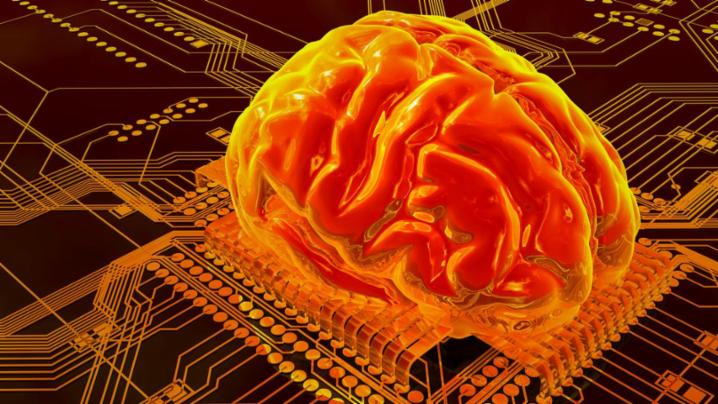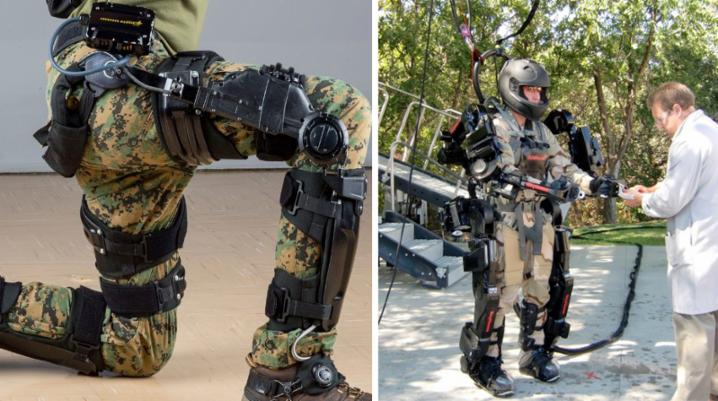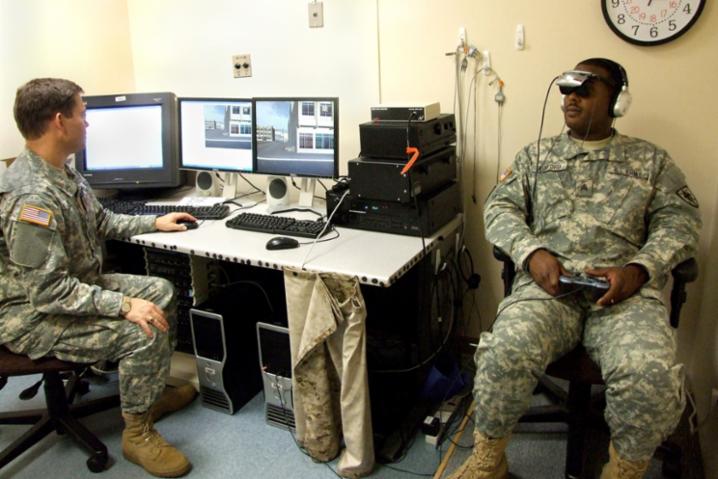Advances in biophysical, biochemical and behavioural technologies are beginning to turn science fiction into reality. These developments offer exciting possibilities, while also raising issues with regard to ethics and responsible use.
The Alliance faces a range of significant opportunities in emerging and disruptive technologies. The field of Cognitive Biotechnology (CBT) is an emerging domain with wide ranging implications for Alliance members’ economic and military competitiveness. And, as was discussed in the case of Artificial Intelligence, developments in this field will require both a dynamic adoption of new technologies and a focus on their responsible governance.
CBT is the ability for technology to enhance and improve human thinking, sensing, coordinating, and acting upon the physical and societal environment. With CBT, our effectiveness—normally constrained by the limits of human physiology – can now be extended and augmented by biophysical, biochemical, or bioengineered means.
The field is in its infancy, but its implications are vast. For instance, in the last decade scientists have accurately melded brain signals with machine interfaces to create mind-controlled prosthetics. More recently they have made this flow of information bi-directional, creating prosthetics that can now feel sensation and send these feelings back to the brain.
If humans can actuate (i.e. put into motion or action) machines, and these machines can in turn actuate humans, then we have moved beyond the confines of our own physiology. Moreover, if these machines are mobile and can interact with our minds at a distance, then we have extended our reach beyond our own physical limits.
Conversely, our inner minds are no longer off limits either: while emerging brain-computer interfaces allow us to train and direct computers, computers are increasingly able to peer into our minds and to train and enhance us. Or, to put it another way, while we have been working to improve and enhance our machines, we now realise that our machines can enhance, improve – and possibly control – us.

Cognitive Biotechnology aims to enhance and improve human thinking, sensing, coordinating, and acting upon the physical and societal environment.
Photo courtesy PRISM, NDU
When considering the wide-ranging uses of CBT, it helps to distinguish among three broad application areas, which can be called “the 3 R’s” – Recover, Raise, and Replace.
Recover includes the repair or rehabilitation of cognitive and biological impairments that prevent the mind and body from functioning effectively. The goal is to return abilities back to baseline functionality. Applications include helping injured soldiers recover their physical capabilities; healing traumatic brain injury; treating post-traumatic stress disorder (PTSD); recovering or (in cases of traumatic stress) suppressing memories; and restoring decision-making and executive functions.
Raise includes the augmentation and enhancement of cognitive and physiological function past an individual’s natural baseline, thereby effecting dramatic changes in operational effectiveness, preparedness, and training. Applications include sensory enhancement (such as seeing farther or hearing more acutely); faster information processing; quicker and more effective decision-making; more efficient learning and language acquisition; and greater physical exertion and endurance. What is true for individual capabilities could similarly be true for groups. CBT could be used to raise unit capabilities through distributed intelligence – that is, all members of the unit see and know what each individual member sees and knows, thus reducing the “fog of war” and improving rapid decision-making, as well as enabling more rapid acquisition and assimilation of new fighting techniques and technologies.
Replace includes the enhancement (and possibly substitution) of mental and physical functions past the bounds of human potential. Sensory connections could be replaced with computer interfaces, making human capabilities independent of their five natural senses. Verbal communication could be replaced by computer-aided telepathy or data downloads. Physical action could be replaced by remote robots or “loyal wingman” drones directed by the mind of the operator. This is perhaps the most futuristic form of enhancement, with most research and development nascent in nature. It is important to note that this form of enhancement does not completely remove human interaction, or else it would be simply another form of automation; it is really about the merger of human biology and mechanical actuation.
These distinctions may prove helpful in setting priorities for further research, investment in technological development, and adoption for operational use. And they could also help in setting principles of responsible use, considering the three categories’ differing levels of technical risk and ethical uncertainty.
The current state and future potential of CBT
Cognitive Biotechnologies are at present focused on three main areas of research: biophysical, biochemical and behavioural. The future direction of these technologies is difficult to predict, particularly as many are still emerging. But they have the potential to significantly disrupt existing assumptions about the evolution of civil society, the economy, and military affairs. It is therefore in the interest of the Alliance to closely monitor the rise of those technologies and applications that are most likely to affect or disrupt current defence constructs and doctrine. Moreover, it will be important to direct early-stage investment into those areas that are particularly promising for the Alliance, or to those which will most likely impact its competitiveness.
Biophysical technologies
Advances in the biophysical area centre on brain computer interfaces (BCI), which can be directly inserted into the human body or via transcranial direct-current stimulation (tDCS). tDCS is a form of neuromodulation that uses constant, direct currents delivered via electrodes on the head, and can be worn or removed at will. While BCI was originally developed to provide assistive technologies (such as prosthetic arms and mentally controlled wheelchairs), recent developments in bi-directionality have allowed for enhanced sensing, for example, bionic eyes or other enhancements to situational awareness. Further applications of these technologies could lead to mental control of aircraft or ground vehicle systems; mind-guided drones or missiles; or the mechanisation of soldiers via exoskeletons and advanced sensors.

Exoskeletons can improve a soldier’s physical capabilities, allowing them to run faster, lift heavier objects and relieve strain on the body.
credit image 1: © Lockheed Martin
credit image 2: © Army Technology
At the same time, tDCS applications have been shown to regulate the human brain itself, affecting the brain’s executive functions, learning mechanisms, memory, language processing, sensory perception, and motor functions. Current work with tDCS focuses on recovery from PTSD and treatment of mental ailments like obsessive compulsive disorder. But the technology also provides for the possibility of raising soldiers’ cognitive and physical capabilities: to analyse scenarios more easily and quickly; to retain and retrieve memories with greater acuity; to modulate perceptions of pain; to improve psychological self-protection; and to embed muscle memory and motor skills more quickly. Another controversial aspect of tDCS is the potential to look inside the mind of the user, to display and play back past memories on an external monitor, or even to insert synthetic memories and images into the mind.
Biochemical technologies
Biochemical research has focused on enhancements to human physiology and cognitive function via drugs, genetic modification and biological derivatives. Combinations of nootropic compounds, both natural and synthetic, have been shown to rebalance and optimise neurochemistry for improved brain and nervous system function and efficiency. These have the potential for raising alertness and attention; speeding up reaction times; enhancing endurance and mental resilience; reducing apprehension and fear; and improving group dynamics and coordination. Recovery aspects include the treatment of depression, PTSD, memory loss, and dementia.
Behavioural technologies
Behavioural research is focused on the modification and improvement of cognitive and motor function through learning algorithms, virtual reality and biofeedback methods. Virtual reality environments have already demonstrated their use in the training of pilots, tank crews and infantry. Mental acuity can be enhanced by training and gamification algorithms. Behaviour and personal habits can be altered by reinforcement learning methods. Applications focus on both improvement and recovery, with recent advances in the treatment of PTSD and behavioural disorders.

A demonstration of a combat simulator, a form of PTSD treatment, is conducted at Walter Reed National Military Medical Center in Bethesda, Maryland, United States.
© U.S. Army
The integration of real-time cognitive and physiological user data (e.g., measures of attention, heart rate, etc.) opens a new vista for raising physical and cognitive performance. Motivational stimuli can be delivered back to the user based on his current physiological and mental state via machine learning-derived algorithms. The future of a personal coach on an intelligent FitBit that motivates and guides you to peak performance may not be too far away. The aggregation of anonymised data from individual performance outcomes into big datasets could further improve these algorithms. The result may be a FitBit that knows you better than you know yourself.
Ethical issues and responsible use
There are several ethical considerations for CBT that may transcend even AI in their complexity. First is the issue of personal agency. If CBT is able to motivate, enable, and even control human decision making and action, where does individual responsibility end? Are soldiers responsible for their actions when under the influence of advanced CBT, and under what conditions?
Relatedly, how does the Alliance ensure that there is sufficient consent for the use of CBT for individuals tasked to use the technology? These technologies can be invasive, both physiologically and mentally, and have the potential to cause harm, particularly as we do not fully understand their unintended cognitive and biological consequences.
In addition, significant privacy concerns will be raised once these technologies can enter our minds and see our most private thoughts and memories. What are the limits of such searches? And what are the protections for physiological and cognitive data, and who may store and control their dissemination or cause their deletion? More generally, what protections will we have against the potential of mind control, cognitive erasure, and reprogramming?
The Alliance’s success with CBT will depend upon well-designed principles and practices relating to these ethical considerations, since the adoption and integration of these technologies will be based on the consent and acceptance of Allied governments and their societies at large. As in the case of AI, the Alliance and member governments will need to develop principles of responsible use, addressing such issues as privacy, consent, lawfulness, responsibility and governability.
This is the third article of a mini-series on innovation, which focuses on technologies Allies are looking to adopt and the opportunities they will bring to the defence and security of the NATO Alliance. Previous articles:
